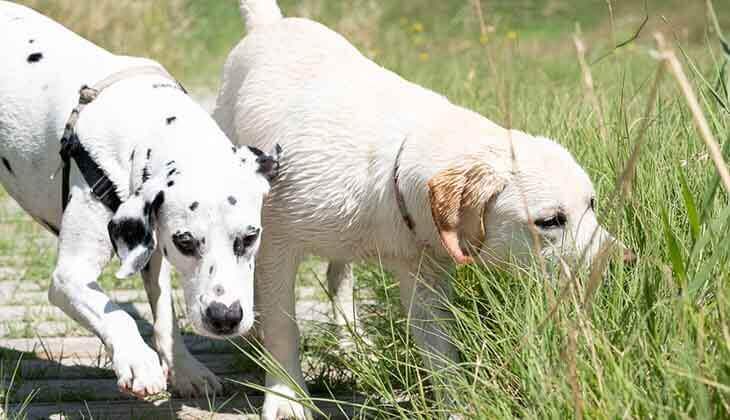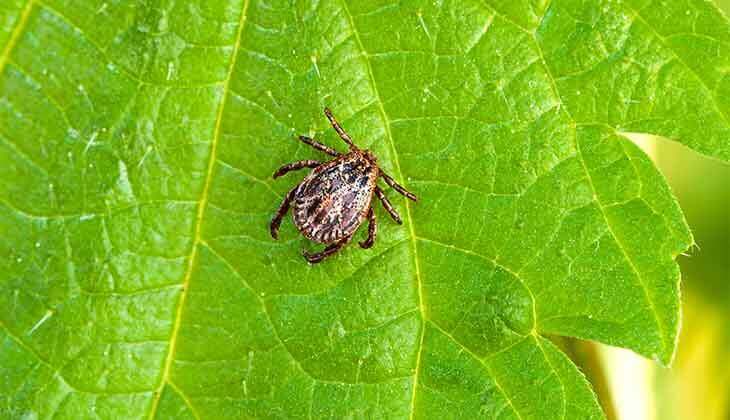Ticks – The Truth
Ticks are not just gross little bloodsuckers which annoy your pet, and you. They can, in fact, spread serious, potentially fatal, diseases to your animals, one of which is a serious illness called ‘babesiosis’.

How does a dog become infected with babesiosis?
Babesiosis spreads to dogs when they are bitten by a tick. The parasite then enters the dog’s blood cells. Direct transmission between dogs can also occur, when no tick is involved, when the blood of one dog mixes with another, for example, in a blood transfusion; when they are fighting or during pregnancy when the puppies share their mother’s blood.
Which animals can carry the infection?
Dogs are the main affected animal. The parasite may also be transmitted to African wild dogs (Lycaon pictus) and black-backed jackals (Canis mesomelas). The reverse may also occur, when domestic dogs can be infected by wild dogs when, for example, a dog is accidentally fed on by an infected tick.
What activities put a dog at risk for Babesia?
- Any activity which increases a dog’s exposure to ticks can increase risk such as going for walks.
- Fighting can increase risk of exposure and non-fighting dogs can be infected after being attacked by an infected dog.
Are certain dogs more at risk?
Male dogs – probably because they tend to roam more – are considered to be more at risk than neutered males or females.
What climate do Babesia parasites prefer?
Ticks like particular climatic regions where specific humidity and temperature suit them. This climatic preference determines the geographic distribution of the different Babesia species transmitted by certain ticks.
Some Babesia species have different geographic distributions:
- Babesia vogeli is transmitted by the brown dog tick – Rhipicephalus sanguineus – which is found worldwide in tropical, sub-tropical and temperate areas of developing and developed countries.
- Babesia gibsoni is spread internationally by the global movement of dogs. It can also be spread between dogs directly, often when they are fighting, without a tick as a vector.
- The tick Dermacentor reticulatus – ornate dog tick – spreads Babesia canis in Europe and likes wet, cool climates.
- R. sanguineus, or brown dog tick, likes warmer climates. This tick is very adaptable and can live in colder climates in centrally-heated homes.
Populations of ticks can appear without warning and spread quickly in regions outside the current vector areas – including in countries where the tick is not present at that time – if there are favourable climatic conditions.
Increased tick feeding increases the likelihood of a dog getting bitten by an infected tick. Babesia infections can show seasonal distribution in dogs based on an increase or decrease in tick feeding patterns.
In which geographic regions can ticks be found?
There are different species of Babesia parasites which can be found in specific areas in the world where the ticks live.
- Babasia rossi is a parasite which is spread by a tick from Africa (Haemaphysalis elliptica). The disease is usually confined to the area where the specific carrying tick is found.
- Babesia canis is found in Europe and is spread by a local tick: “ornate dog tick”.

What kinds of ticks can be found?
- Haemaphysalis elliptica, or yellow dog tick, has a hard body and is the most common vector causing biliary in dogs in South Africa. It attaches to three hosts to complete its life- cycle.
- Rhipicephalus sanguineus, or brown dog tick, or brown kennel tick, is found all over the world but usually in warmer climates. It is unusual in that it can complete its life cycle indoors. It uses three hosts to complete its life-cycle.
Why is babesiosis spreading?
- Climate change makes new areas conducive to tick survival.
- Veterinarians are more aware of exotic diseases resulting in increased diagnoses of diseases already present.
- Ticks are introduced into new areas possibly by dogs travelling from areas where ticks are found.
- Better diagnostic tests are available which allow vets to diagnose more infected dogs.
How does babesiosis spread locally?
The brown dog tick (Rhipicephalus sanguineus) can survive in many environments. If dogs are not protected, the disease can spread quickly amongst dogs, especially amongst young canines.
This disease spreads locally when dogs who are at risk pick up an infected tick. In places where there are many dogs in close contact, such as in kennels, breeding institutions or shelters, the risk is increased.
What is the latest news about the spread of Babesia?
- It appears that Babesia has been introduced into new areas – continent, countries, or regions. A completely new species may be discovered. New variants of Babesia have been found recently in Israel, Europe and North America.
- New cases have been found far away from known risk areas for Babesiosis. These areas include Romania, Russia and Northern Europe.
- The first report of this disease – acquired locally – was found in the U.K. in 2015-2016. The infection was traced to an area where infected ticks – D. reticulatus – were found on dogs in local walking trails and exercise areas.
- Babesia gibsoni – originally found in central and eastern Asia, especially in Japan and Korea – has spread to many countries, including Australia, apparently by transporting dogs used for illegal fighting.
PREVENTION IS BETTER THAN CURE!
BRAVECTO® TICK AND FLEA TREATMENTS PROVIDE THE PERFECT PROTECTION AND LAST FOR AT LEAST 12 WEEKS DEPENDING ON THE PRODUCT YOU CHOOSE. VISIT HTTPS://WWW.BRAVECTO.CO.ZA/FOR-DOGS.ASPX FOR MORE INFO ON HOW BRAVECTO® CAN PROTECT YOUR DOG.
ZA-BRV-220200008
Subscribe to our Newsletter
Get to know your furry friend better! Sign up for all things dog- or cat-related.
The Hairy Facts about the dreaded hairball
12 April 2021
Help! My dog’s barking mad! Volume 2
12 April 2021
Your Itchy, Scratchy Cat – All About Cat Skin Problems
12 April 2021
The Dog’s Diet: A Bone of contention?
01 April 2021
Mango Fly Worms: How to Spot and Eliminate them
Posted on November 28,2019
Managing Mange And Mites In Your Dog
Posted on June 11,2018
Why Do Cats Purr and How? Learn What Your Cat Is Saying
Posted on October 14,2020
How to Get Rid of Ear Mites in Dogs
Posted on November 06,2019









